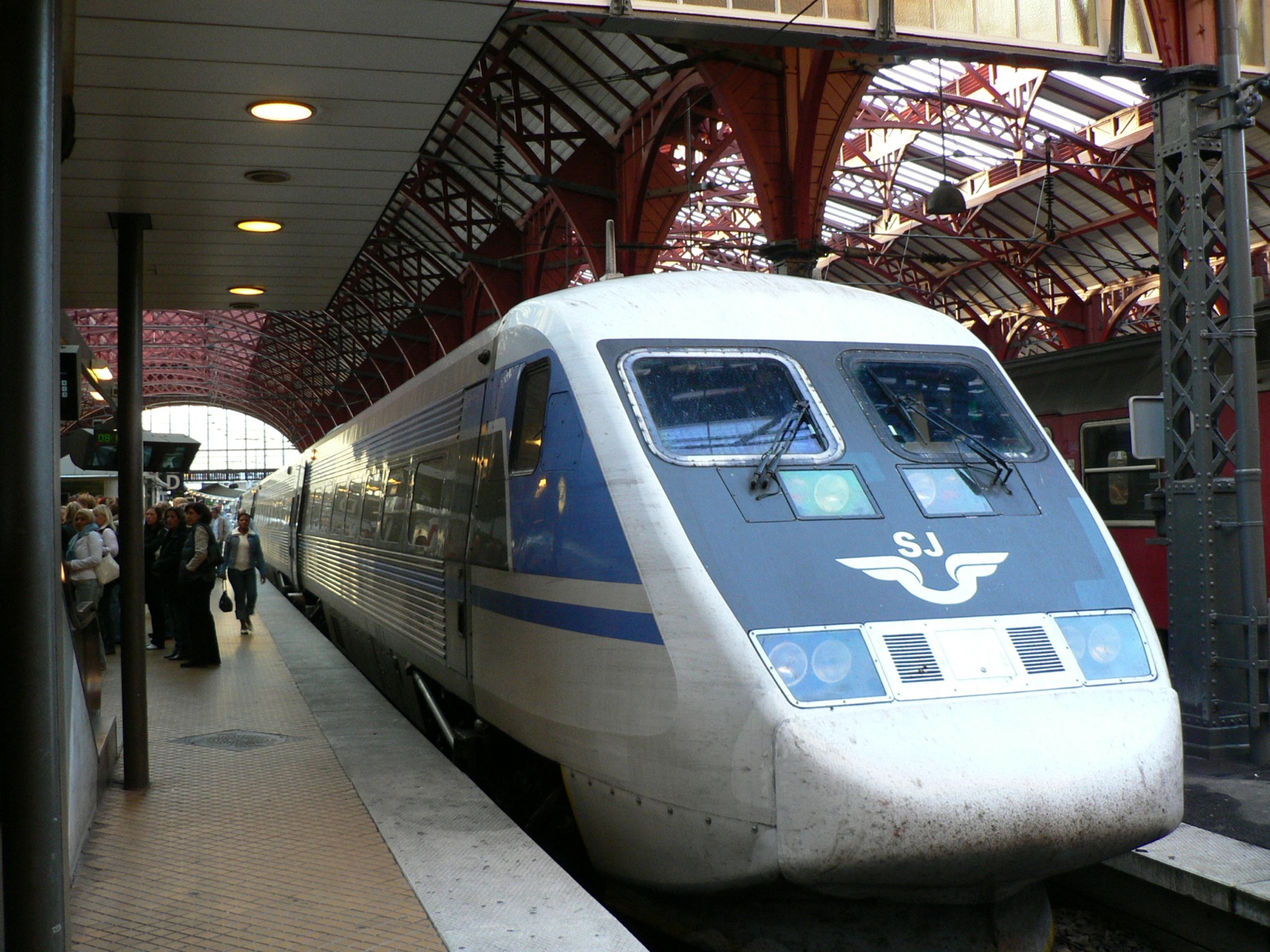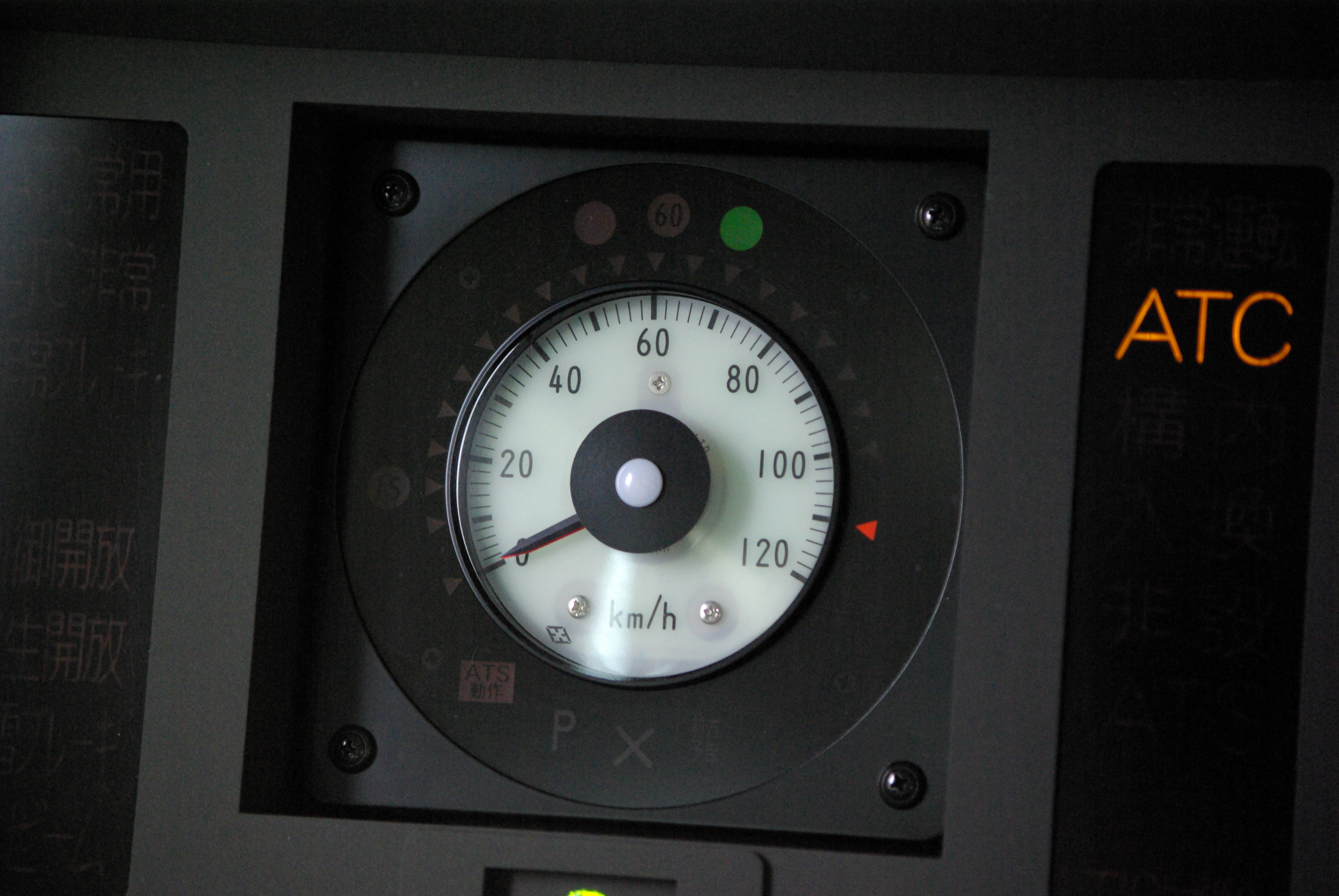|
NSB Class 71
NSB Class 71 () is an electric multiple unit used by Flytoget for the Airport Express Trains on the Gardermoen Line of Norway. Sixteen three-car train sets were built by Adtranz Strømmen between 1997 and 1998. The units are capable of , connecting Oslo Central Station and other stations in Metropolitan Oslo to the Oslo Airport, Gardermoen, along Norway's only high-speed railway. In a three-car configuration, the units weigh and are long, with a power output of . The units are similar to the NSB Class 73, and are related to the Swedish X2 units. By 2009, all units were expanded with a fourth car. Specifications The unit is based on the Swedish X2 designed by Kalmar Verkstad in the 1980s, and delivered from 1990 to the Swedish State Railways for use in their X 2000 high-speed intercity trains. Although the technology involved is similar, like spot-welded stainless steel car bodies, the Class 71 differs in several ways. First, the unit does not have a separate locomotive unit, ... [...More Info...] [...Related Items...] OR: [Wikipedia] [Google] [Baidu] |
Oslo Central Station
Oslo Central Station (, abbreviated ) is the main railway station in Oslo, and the largest railway station within the entire Norwegian railway system. It connects with Jernbanetorget station, which is served by trams and the Oslo Metro. It's the terminus of Drammen Line, Gardermoen Line, Gjøvik Line, Hoved Line, Østfold Line and Follo Line. It serves express, regional and local rail services by four companies. The railway station is operated by Bane NOR while its real estate subsidiary, Bane NOR Eiendom owns the station, and was opened in 1980. Oslo Central Station was built on the site of the older Oslo East Station (', ), the combining of the former east and west stations being made possible by the opening of the Oslo Tunnel. Oslo Central Station has 19 tracks, 12 of which have connections through the Oslo Tunnel. The station has two buildings, the original Oslo East building and the newer main building for Oslo Central. Each building houses a large shopping cent ... [...More Info...] [...Related Items...] OR: [Wikipedia] [Google] [Baidu] |
X 2000
X 2000, officially designated X2, is an electric high-speed tilting train operated by SJ in Sweden. It has a top commercial speed of 200 km/h (124 mph) and a top design speed of 210 km/h (130 mph) but has achieved a maximum speed of 276 km/h (171 mph) in tests. It primarily serves major routes, including Stockholm–Gothenburg and Stockholm–Malmö–Copenhagen. The X2 project began in 1969 as a collaboration between Kalmar Verkstad, Swedish State Railways (SJ), and ASEA. In 1986, SJ placed an order for 20 sets of a new type of train. Asea was responsible for manufacturing the electrical components, while Kalmar Verkstad (Statsföretag) was responsible for the mechanical design and manufacturing. Ultimately, a total of 44 train sets were built. The trains, designed and manufactured in Kalmar, Sweden, were launched in 1990 as a first-class only train with a meal included in the ticket price, and free use of the train's fax machine. From 1995 second class was introdu ... [...More Info...] [...Related Items...] OR: [Wikipedia] [Google] [Baidu] |
Workshop
Beginning with the Industrial Revolution era, a workshop may be a room, rooms or building which provides both the area and tools (or machinery) that may be required for the manufacture or repair of manufactured goods. Workshops were the only places of production until the advent of industrialization and the development of larger factories. In the 20th and 21st century, many Western homes contained a workshop in either the garage, basement, or an external shed. Home workshops typically contain a workbench, hand tools, power tools, and other hardware. Along with the practical application of repairing goods, workshops are often used to tinker and make prototypes. Some workshops focus exclusively on automotive repair or restoration although there are a variety of workshops in existence today. Woodworking, metalworking, electronics, and other types of electronic prototyping workshops are among the most common. Backshop In some repair industries, such as locomotives and aircra ... [...More Info...] [...Related Items...] OR: [Wikipedia] [Google] [Baidu] |
Automatic Train Control
Automatic train control (ATC) is a general class of train protection systems for railways that involves a speed control mechanism in response to external inputs. For example, a system could effect an emergency brake application if the driver does not react to a signal at danger. ATC systems tend to integrate various cab signalling technologies and they use more granular deceleration patterns in lieu of the rigid stops encountered with the older automatic train stop (ATS) technology. ATC can also be used with automatic train operation (ATO) and is usually considered to be the safety-critical part of a railway system. There have been numerous different safety systems referred to as "automatic train control" over time. The first experimental apparatus was installed on the Henley branch line in January 1906 by the Great Western Railway, although it would now be referred to as an automatic warning system (AWS) because the driver retained full command of braking. The term is especi ... [...More Info...] [...Related Items...] OR: [Wikipedia] [Google] [Baidu] |
Flytoget Innvendig
Flytoget (') is a high-speed airport railway service connecting Oslo Airport to Oslo Central Station. Run by Flytoget AS (formerly NSB Gardermobanen AS), it operates on the high-speed Gardermoen Line using sixteen GMB Class 71 electric trains. Normal service frequency is once every ten minutes, with five of the services each hour continuing westwards beyond Oslo Central. The journey takes nineteen minutes, with extended services serving nine stops within Greater Oslo and taking up to 60 minutes. Flytoget transported 5.4 million passengers in 2007, a 34-percent market share of airport ground transport. The service, which has a top speed of , is the only high-speed rail service in Norway. Construction started in 1994 and high-speed trains began serving Gardermoen Airport from the date of its opening on 8 October 1998, although full operation using the Romerike Tunnel had to wait another ten and a half months after severe leaks caused by the tunnel's construction led t ... [...More Info...] [...Related Items...] OR: [Wikipedia] [Google] [Baidu] |


